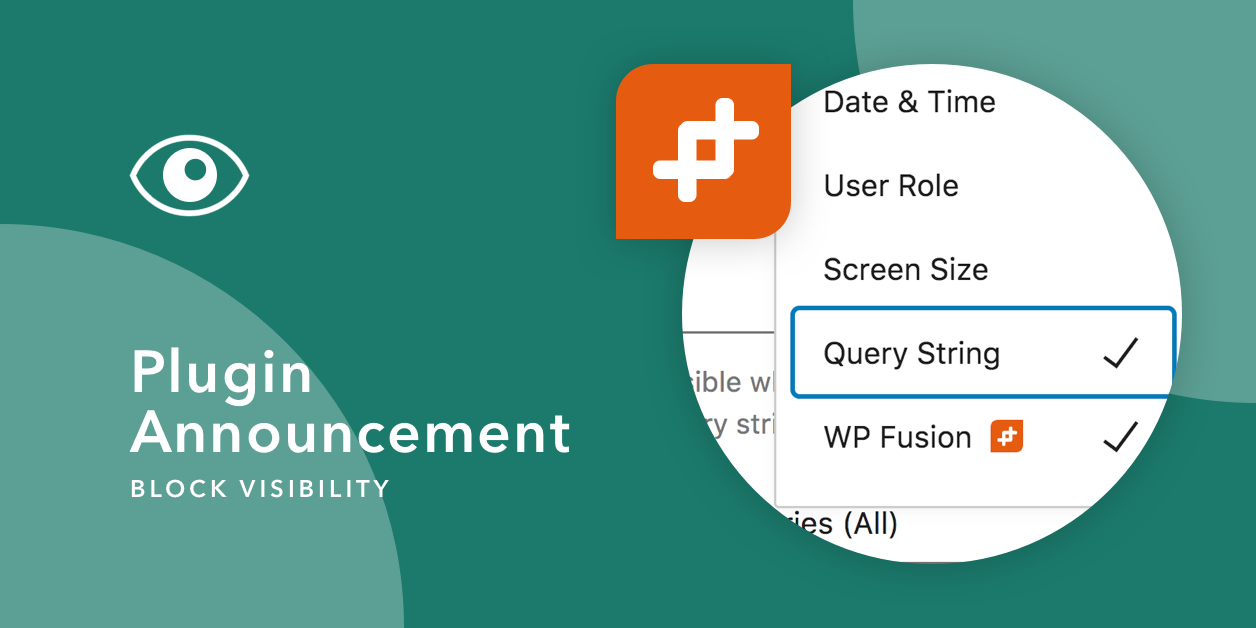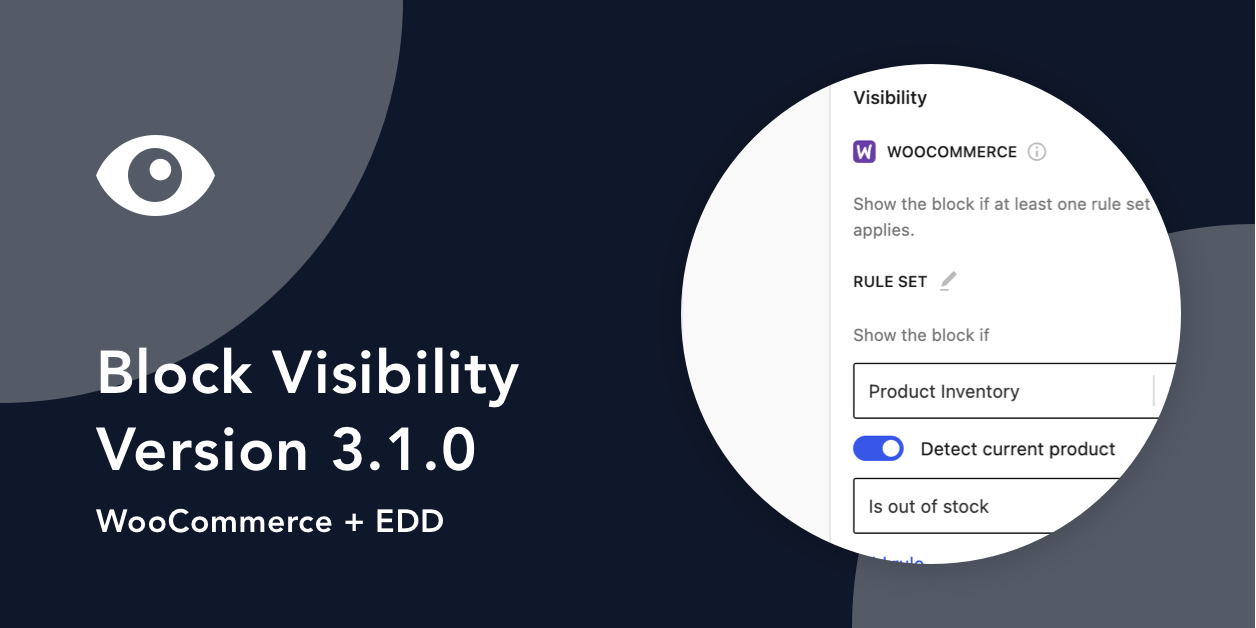With version 1.6.0 out of the way, it was time to tackle outstanding feature requests and add new functionality to Block Visibility. I am pleased to announce that version 1.7.0 marks the debut of the Query String control as well as our first third-party integration, WP Fusion!
WP Fusion
Jack Arturo, the founder of WP Fusion, reached out in March to see if integration with Block Visibility would be possible. Admittedly, I was initially not familiar with the plugin. After perusing their website, I immediately became excited about the opportunity. To steal some of their own words:
WP Fusion extends the plugins you use every day with the power of your CRM or marketing automation platform. Using automations in your connected CRM, you can then create highly targeted engagement campaigns via email, SMS, and other marketing channels.
WP Fusion
Based on your connected CRM or marketing platform, WP Fusion allows you to automatically assign “tags” to users directly in WordPress. For example, you could integrate subscriber tags in Mailchimp with the users of your website. Then you are able to restrict content (pages, posts, etc.) based on a user’s tags.
I am only scratching the surface of what WP Fusion can do. If you are not already familiar with the plugin, I encourage you to check it out. The applications are endless.
After speaking with Jack, the Block Editor was an area of opportunity. WP Fusion lacked an efficient way to show or hide block content based on WP Fusion tags. Given that Block Visibility was built specifically for this purpose, an integration was born.
If you have WP Fusion installed and are running Block Visibility 1.7.0, you will now have access to the WP Fusion visibility control. To enable, click the ellipsis icon in the Controls Toolbar and select “WP Fusion”.

For a complete overview of how the WP Fusion control works, take a peak at the Knowledge Base article.
Query String
The second control added in version 1.7.0 was Query String. This has been the most popular feature request in the past few months. It’s one that significantly increases the marketing capabilities of Block Visibility and is subtly extremely powerful.
For an example of how it works, anyone reading this after clicking the article link on Twitter will see a little message below. Not seeing the message, copy the following URL into a new browser window and scroll down to this section.
https://blockvisibilitywp.com/version-1-7-0-introducing-the-wp-fusion-and-query-string-controls/?bv_query=twitterThe Query String control is available to all Block Visibility users, but due to its complexity, it’s not enabled at the block level by default. You can easily enable Query String functionality by clicking the ellipsis icon in the Controls Toolbar and selecting “Query String”.

For a complete overview of how the Query String control works, take a peak at the Knowledge Base article.
The Best of the Rest
Version 1.7.0 included a number of other minor enhancements, and I encourage you to check out the full release notes.
One item to note was a REST API bug. In prior versions of Block Visibility, blocks that were hidden by visibility controls would occasionally still appear in REST API requests. This was discovered after hidden blocks began appearing in the core Latest Posts Block. While the bug in Block Visibility has been fixed, there is a larger issue with the Latest Posts block itself that needs addressing.
The world of “blocks” is ever expanding, especially with Full Site Editing coming soon. We are committed to ensuring Block Visibility works harmoniously with the larger ecosystem. If you do discover an issue, please let us know!
Next Steps
Version 1.8.0 will likely drop toward the end of April. There are a lot of UI improvements planned, including the ability to choose the default controls that are automatically added to each block. The focus will also be shifting to Block Visibility Pro and new third-party integrations.
As a reminder, we have launched an email newsletter, which you can sign up for below. The plan is to send an email every couple of months featuring enhancements to the plugin, tutorials, upcoming news, and information about Block Visibility Pro.
Stay in the loop…
Thank you for your interest in Block Visibility. If you do give the plugin a try, and are finding it useful, please consider leaving a review over on WordPress.org. And of course, let us know if you have a feature request!
Until next time…





Share Your Thoughts